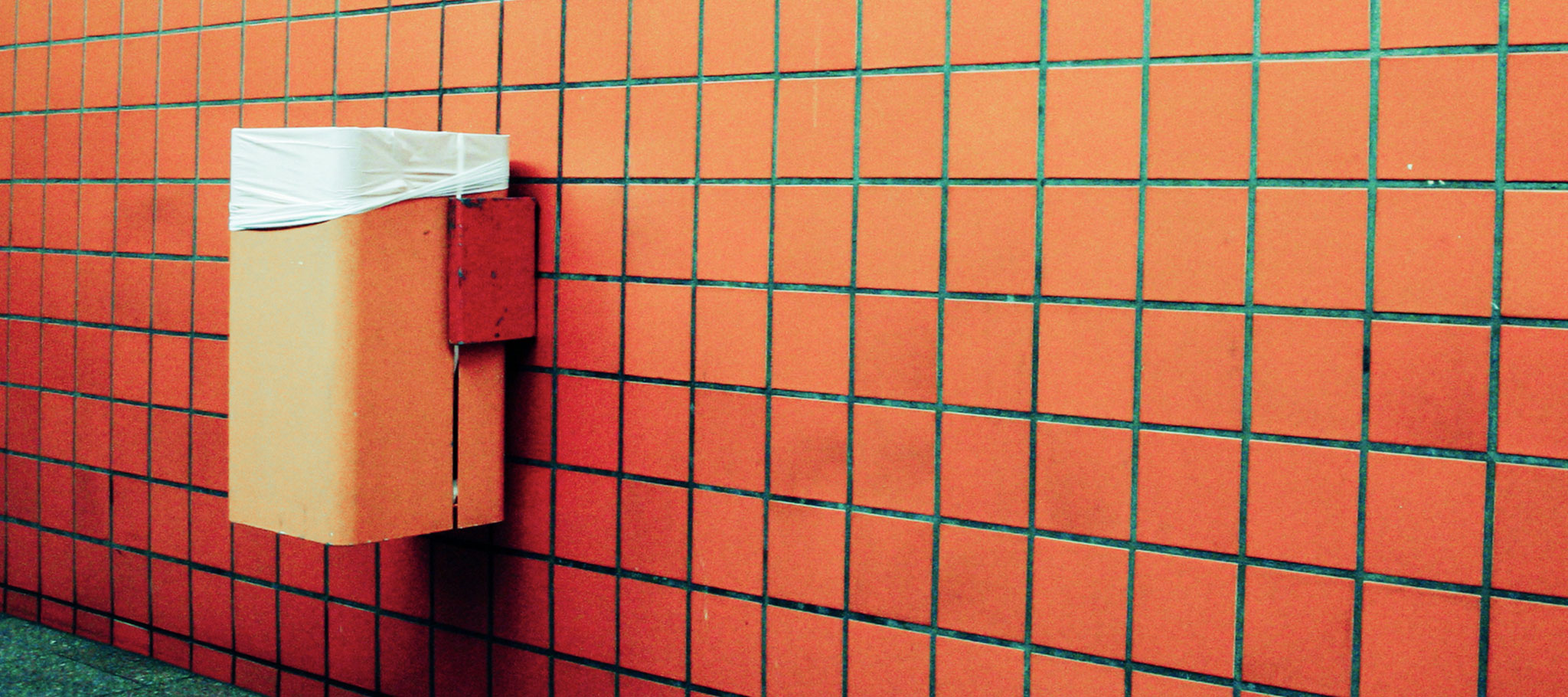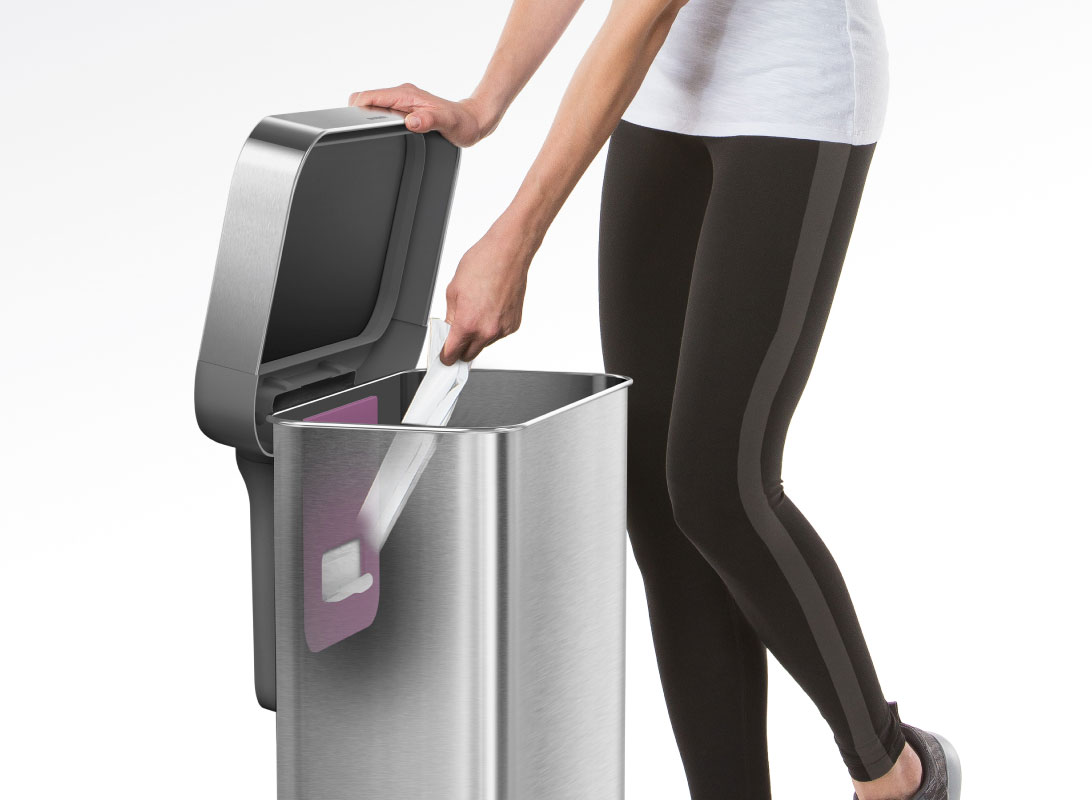
Innovation Lessons from My Garbage Can
Uber has taught us that even the most commonplace products and services are ripe with innovation. They’ve re-invented the taxi experience, and many people would agree that, given a choice, they’d never go back to the old way.
Today, I want to give a shout out to another company, one that’s doing amazing things with garbage cans: simplehuman.
Simplehuman, founded in 2000 by Frank Yang, is a great case study in terms of product innovation, as well as business model. It had one simple mission: make a better trash can. For the last year, I've had a simplyhuman garbage can in my kitchen, so I can attest. It is a better trash can.
Before we switched to simplehuman, this is the kind of trash can we had in the kitchen:

And this is the simplehuman can that’s in my kitchen today:

Two features of this product make it a real game-changer. The lesser of these was the rim around the top that completely hides the edges of the plastic bag that peek over the edge most cans. I didn’t realize how ugly this was until it was gone. (insert sigh of relief here)
But the real hero is the built-in garbage bag dispenser. As you can see from the image below (pulled directly from simplehuman’s website), a dispenser for new garbage bags is built right into the body of the can, saving me from having to walk across the room to get a new bag from the box under the kitchen sink when I need a replacement. Yes, this is a seemingly small inconvenience, but once it’s removed, it seems a silly waste of effort that you ever had to walk across the room in the first place.
While they may not be solving world hunger, these two improvements are enough for me to never want to go back.

Simplehuman: Our new stainless steel rectangular step can features an innovative 'liner pocket' that stores and dispenses liners from inside the can for a faster liner change.
But from a business perspective, here's where it gets interesting. In order to have garbage bags that fit both the dispenser and perfectly around the rim (so that no "spillover" bag is showing,) I need to use their custom-fitted bags. These bags are sized specifically for this can and come in little boxes perfectly sized to fit the built-in dispenser.
So where does one get these magical bags? Well, when you buy the can, there’s an insert that directs you to download simplehuman’s app. In the app, you can "manage your supplies," by ordering garbage bags or, even better, setting up a subscription, which is what I did.
What do these garbage bags cost? A 100-count box of simplehuman garbage bags is about $25. That doesn’t break the bank, but as it turns out, it’s about twice what Hefty and Glad bags cost. Besides that, the garbage can itself is about $100, compared with less than half of that for one of their less innovative competitor's stainless steel kitchen garbage cans. Again, not outrageous, but still a substantial premium. So what’s innovation worth to simplehuman? About double. And it's worth it to me to pay it to solve problems, even if I never realized there were problems until simplehuman’s solution brought them to my attention.
Coming up with these types of innovations for your business starts with finding painpoints. What is your customer's equivalent of having to walk across the room to get a garbage bag from under the sink? It doesn’t have to be pain that drives them crazy. Solving just a small irritation can turn out to be a highly appreciated innovation. And what about aesthetic gaps in your products that nobody focuses on, but would be obvious once gone (the way Steve Jobs showed us how ugly PCs were by creating the iMac)?
Finding these types of unmet points of pain can be achieved through ethnography and other research techniques that create customer empathy. Techniques like these can generate profound insights with relatively minimal effort, and at FROM, we utilize them on nearly every project. The majority of the time, the most winning features of the new digital products we create come from solving problems generated by these insights. The ideas may not come from the customers (in fact, they probably won't) but the pain insights do. Once you have those, it can open up new doors, and allow your team to come up with many new solutions.
Additionally, innovation is often not just about the product, but also the business model. Achieving simplehuman’s innovation required custom-fit garbage bags. I’d imagine that, at one point before launching this product, simplehuman realized it would be difficult to get every grocery store in America to carry these bags, especially before their product achieved critical mass. That logistical problem could have killed the whole concept. But instead of working within the existing ecosystem, where can-sellers have to align to a few non-tailored garbage bag sizes, they shifted their business model to app-based subscription. This allowed them not only to deliver the innovation, but also to double the price of their bags (probably without customers even noticing, since their bags aren’t sold side-by-side with mainstream brands), and to realize 100% of the revenue via direct sales, rather than splitting with a retailer and distributor.
So I say Bravo!, simplehuman. Great innovation, great business, and thanks for making my life a little bit better -- I’m happy to pay you more for it. Now imagine what I’d be willing to pay if you could figure out how to get the can to take the full garbage bag outside!